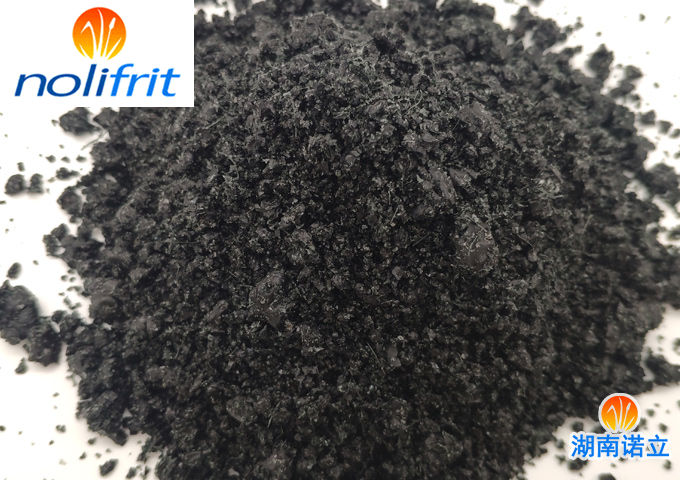Comparison of Various 2 Coating 1 Firing Processes
The first type, the ground coat powder-the cover coat powder, that is, the dry ground coat-the advantages of two enamel and one firing of the dry cover coat:
1. Suitable for mass production of flat products
2. Clean
3. Highly automated
4. No need to grind
5. No need to dry
6. Smooth porcelain surface
shortcoming:
1. Not suitable for producing products with complex structure
2. Limited choice of enamel colors
3. Air conditioning system is needed
4. Need to continuously recover a large amount of enamel powder
5. Large nozzle wear
6. High investment cost

The second enamel and the first firing of the dry cover coat-the dry cover coat adopts electrostatic spray enamel, requiring the use of zero-carbon steel for the billet, and its carbon content is generally less than 0.008%. A higher carbon content will cause blast holes on the surface of the product. And other defects. The pretreatment of the blank is more stringent than the ordinary wet process. In addition to the usual degreasing, pickling, and neutralization, it is also required to be cleaned with pure water. The spray cleaning is the best for the entire pretreatment process. The pre-treatment process is as follows: degreasing-washing-hot acid washing-cold acid washing-water washing-secondary degreasing-water washing-neutralization-pure water washing-drying.
The second type, ground coat slurry-cover coat powder, that is, the advantages of two enamel and one firing of wet ground coat and dry cover coat:
1. Suitable for mass production of flat products
2. Clean
3. Highly automated
shortcoming:
1. Not suitable for producing products with complex structure
2. Limited choice of enamel colors
3. Air conditioning system is needed
4. Need to continuously recycle a large amount of enamel powder
5. Large nozzle wear
6. High investment cost
Wet ground coat and dry cover coat are two enamels and one firing. The steel can be low carbon steel (0.03%~0.08%). The ground coat is thinner than the traditional ground coat, and it needs to be dried after the ground coat is sprayed.
Ground coat fineness: 200-mesh sieve sieve balance 1%~2%.
Ground coat density: 1.45~1.60g/cm3.
Thickness of wet ground coat: 40~80μm.
Dry cover coat layer thickness: 30~45μm.
The enamel supplier has developed a professional ground coat. Only a soft ground coat can replace the traditional hard ground coat. This makes the ground coat melt more easily than the cover coat, so that the gas can escape in time during the firing process to avoid after firing. Produce black spots and pinholes. In addition to improving the ground coat formula, clay abrasives and other materials that help gas escape during firing have also been developed. In order to make the thickness of the porcelain layer uniform, it is recommended to use automatic spraying equipment. Wet ground coat-dry cover coat two enamel and one firing process is suitable for high-speed flat-plate spraying. However, due to the influence of dry powder, the color of the product has limitations.
The third type is the ground coat slurry-the cover coat slurry, that is, the wet ground coat-the advantages of two enamel and one firing of the wet cover coat:
1. The enamel is rich in color
2. Varieties of enamel slurry can be changed quickly
3. It only needs to be dried once
4. No need for air circulation system
5. Low investment cost
shortcoming:
1. The repair rate is 5~10% higher than the previous two methods
2. Waste water recycling is needed
3. Small batch production
Wet ground coat-wet cover coat application is developed after the application of wet ground coat-dry cover coat, dry ground coat-dry cover coat. The ground coat can be applied by electrostatic wet spraying or electrophoresis to obtain a fairly uniform film thickness. After the ground coat is wet sprayed, the cover coat can be sprayed without drying. The characteristics of the ground coat are similar to the process requirements of wet ground coat-dry cover coat. However, in the wet ground coat-wet cover coat process, the thickness control of the ground coat requires special treatment to avoid air bubbles during the firing process. The wet ground coat contains different clays and some organic materials to promote the escape of gas during the firing process. The choice of cover coat is also very important and needs to be compatible with the ground coat. During the firing process, the cover coat needs to have a higher melting temperature to ensure the smooth escape of the gas generated during the firing of the ground coat.
Typical cover coat characteristics are as follows:
Enamel slurry fineness: Bayer sieve 2.0~6.0 grids (200 mesh screen sieve balance 1%~2%).
Density: 1.7~1.72g/cm3.
Application thickness: 120~140μm.
In short, the two enamel and one firing process can greatly improve production efficiency, reduce energy consumption, enamel consumption, labor, and greatly reduce pollution.